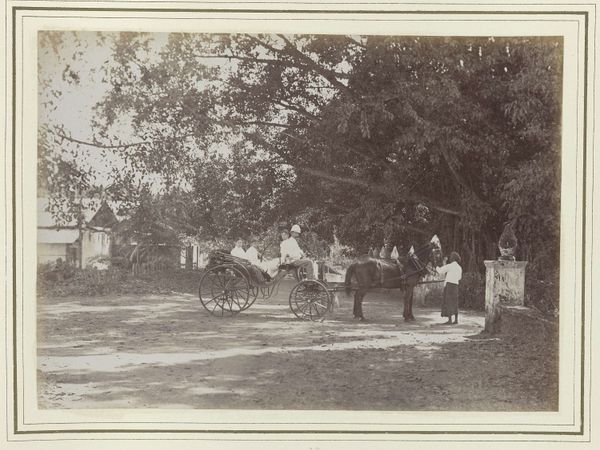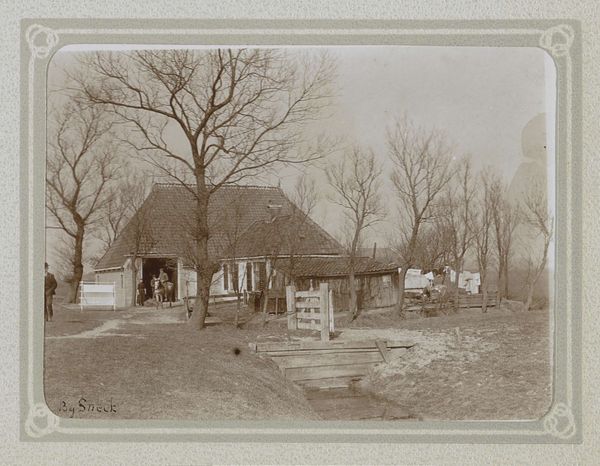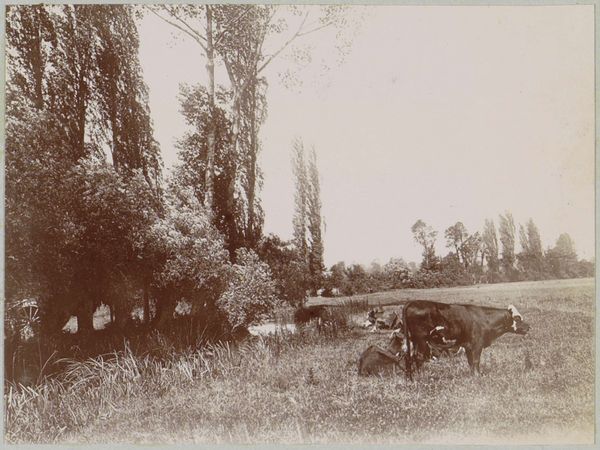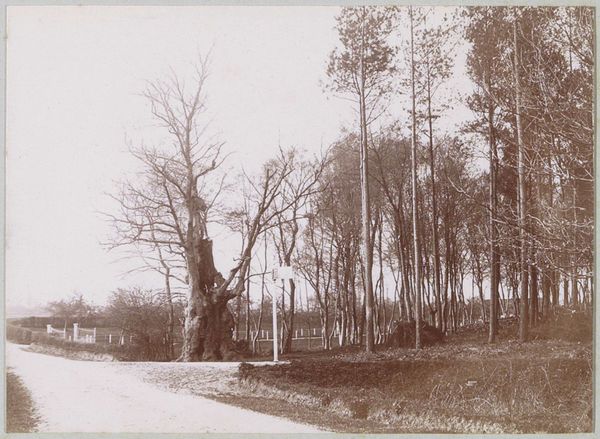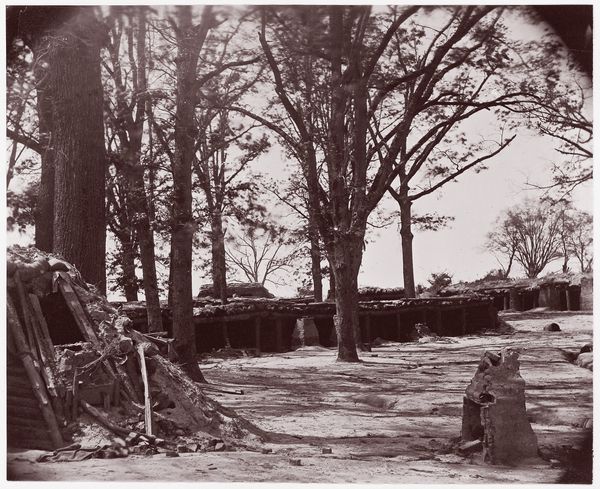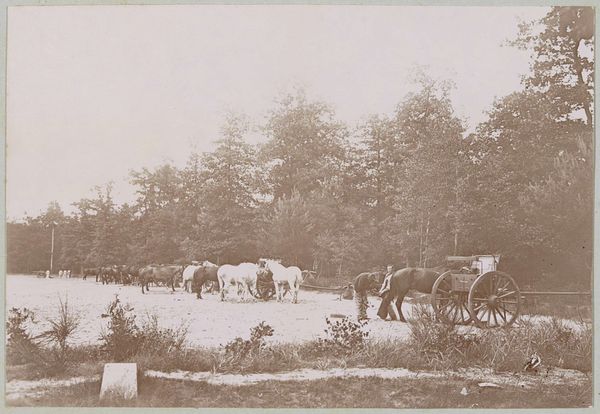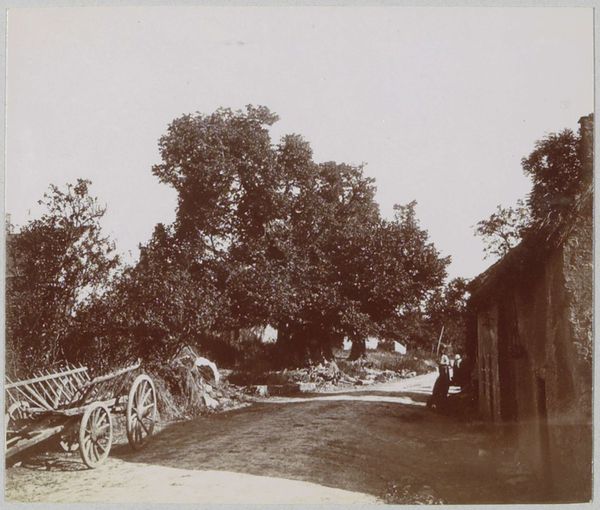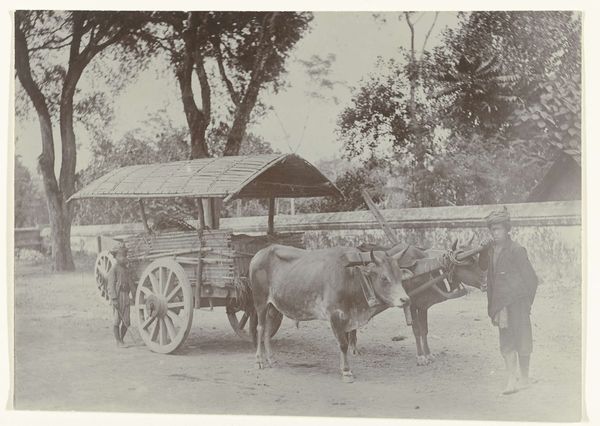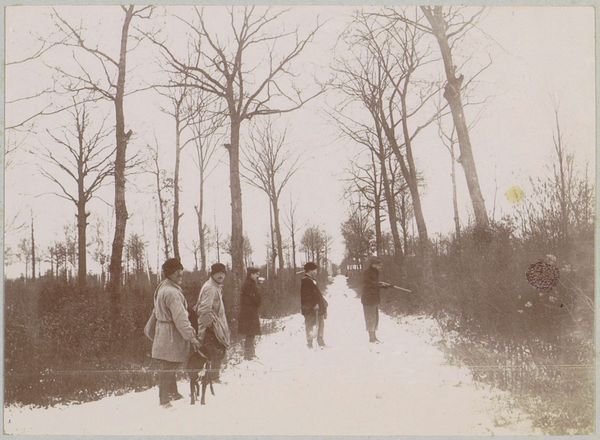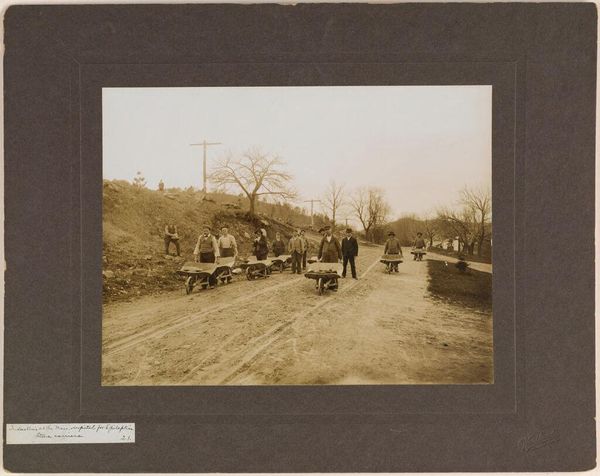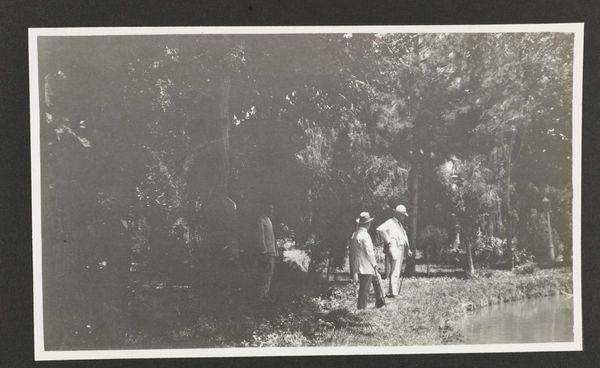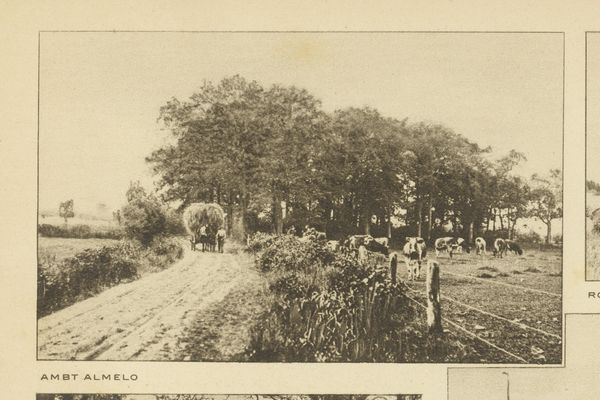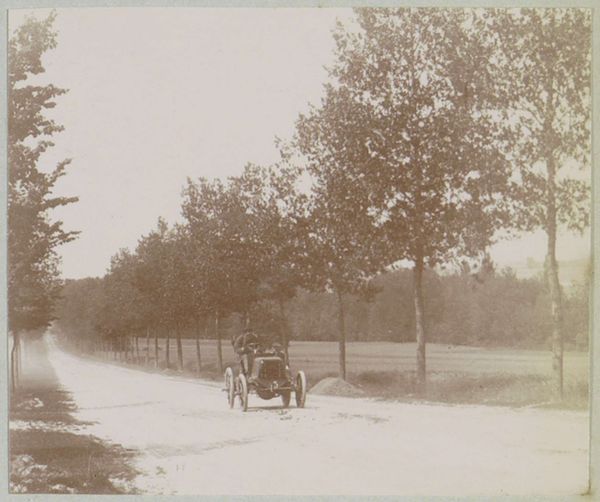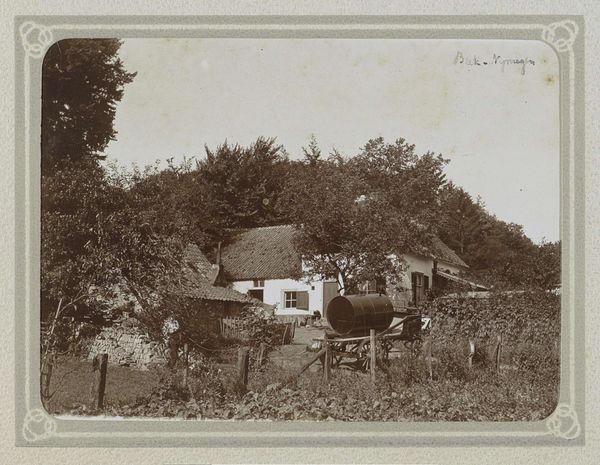
Mannen met een kar onder een boom, vermoedelijk tijdens het oogsten in Midden-Frankrijk 1899
0:00
0:00
plein-air, photography
#
plein-air
#
landscape
#
photography
#
genre-painting
Dimensions: height 78 mm, width 110 mm
Copyright: Rijks Museum: Open Domain
Editor: We’re looking at an 1899 photograph, "Mannen met een kar onder een boom, vermoedelijk tijdens het oogsten in Midden-Frankrijk," housed in the Rijksmuseum. It depicts men gathered beneath a tree with a cart. It has a stillness, a quiet that makes me wonder about the stories it holds. How do you interpret this work, and what can it tell us about the lives of the people in it? Curator: This photograph offers a powerful glimpse into the realities of labor at the turn of the century. The men's postures suggest weariness. It appears this image documents workers, their livelihood intimately tied to the land and its seasons, captured during their harvest. Their clothing seems homespun and worn. Photography, unlike painting, provides seemingly objective details of daily toil. But consider this: What socio-economic factors led to the necessity of such arduous labor for these people, and who controlled the means of production that determined their fate? Editor: So you see it as speaking to larger economic inequalities? The role of labor within agricultural structures? Curator: Absolutely. We must examine the historical context. Land ownership in France during this period was extremely uneven. What was the impact on those without property? Did they have agency in negotiating their wages or working conditions? How did their gender and race factor into the type of labor they were allowed to perform? I wonder how this scene resonates today with contemporary migrant workers and their place in the food chain. Editor: That’s fascinating. It makes me reconsider the photo, not just as a slice of life, but a commentary. Curator: Exactly! By exploring the historical and social layers beneath the surface, this image transforms from a simple landscape into a poignant reflection on class, power, and the human condition. Editor: Thank you, this has changed how I view images and what I can learn from them. Curator: You're welcome! Remember, art is never created in a vacuum, and unpacking these contextual layers enhances our understanding of both the artwork and the world we inhabit.
Comments
No comments
Be the first to comment and join the conversation on the ultimate creative platform.
